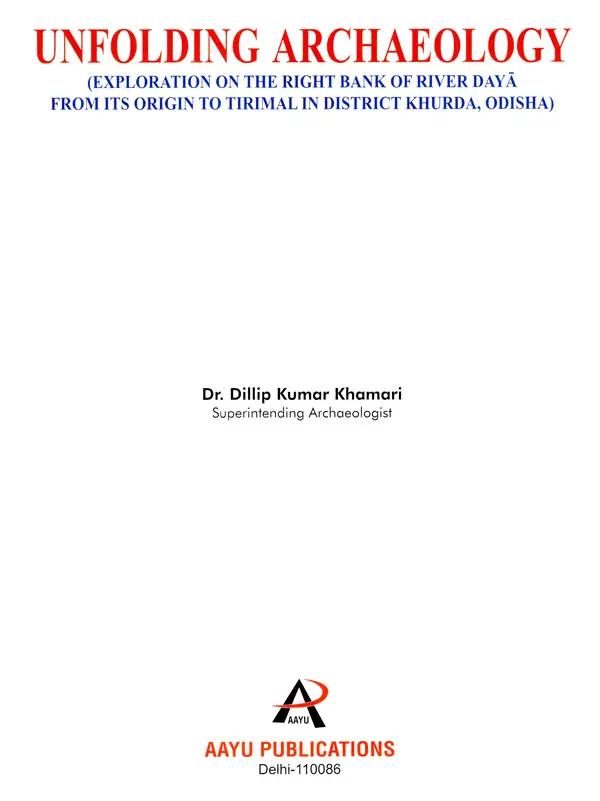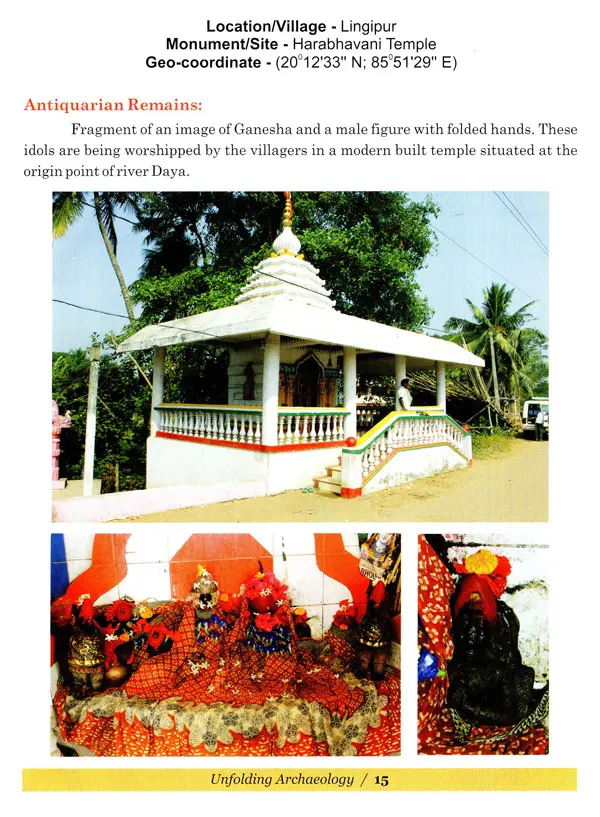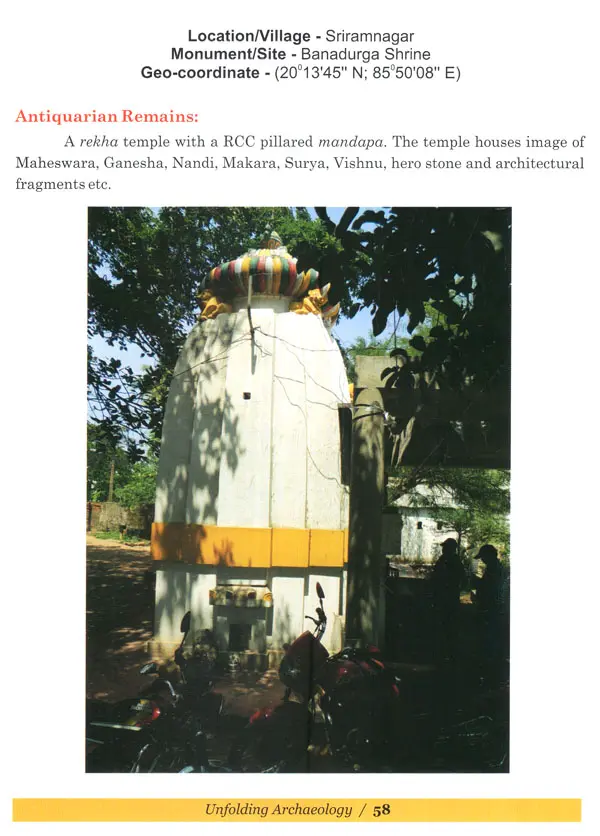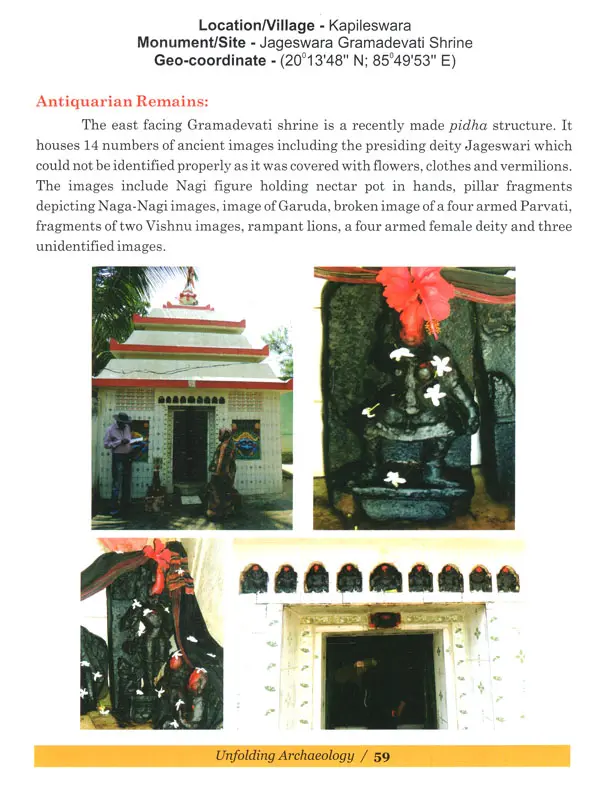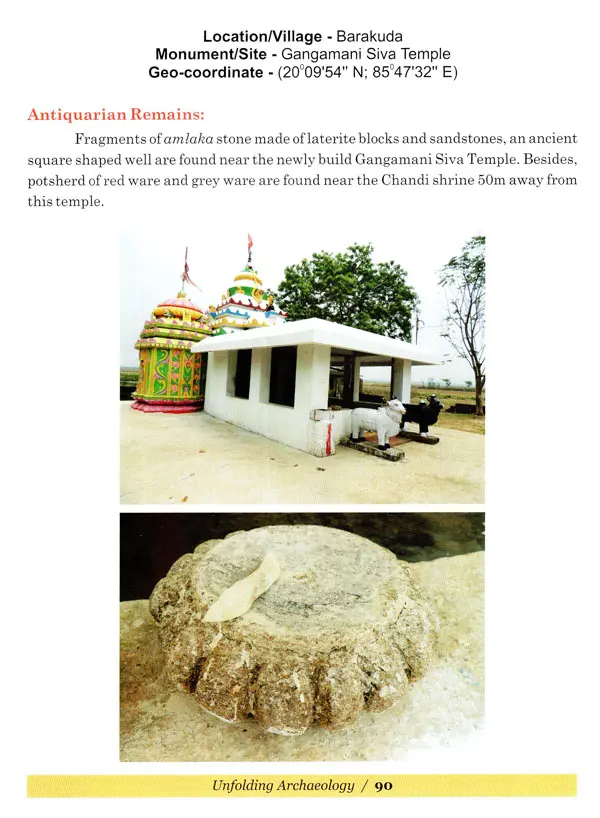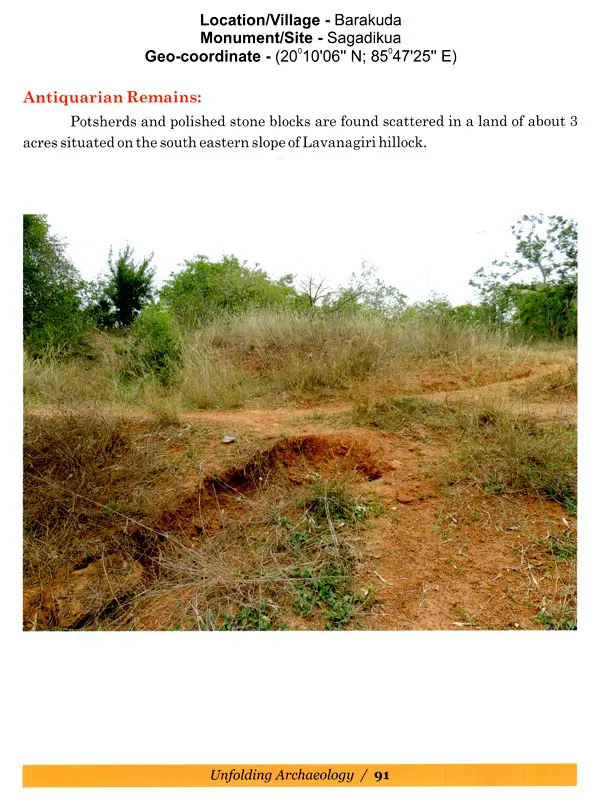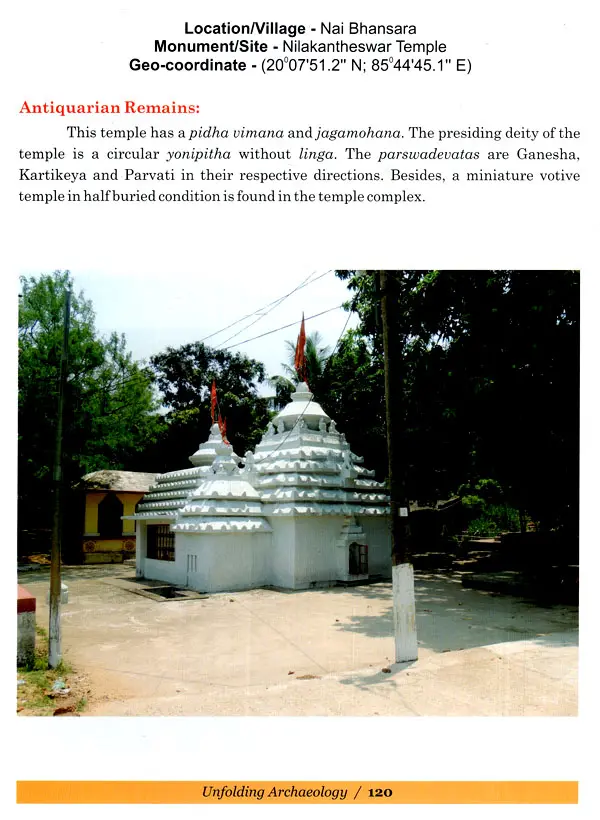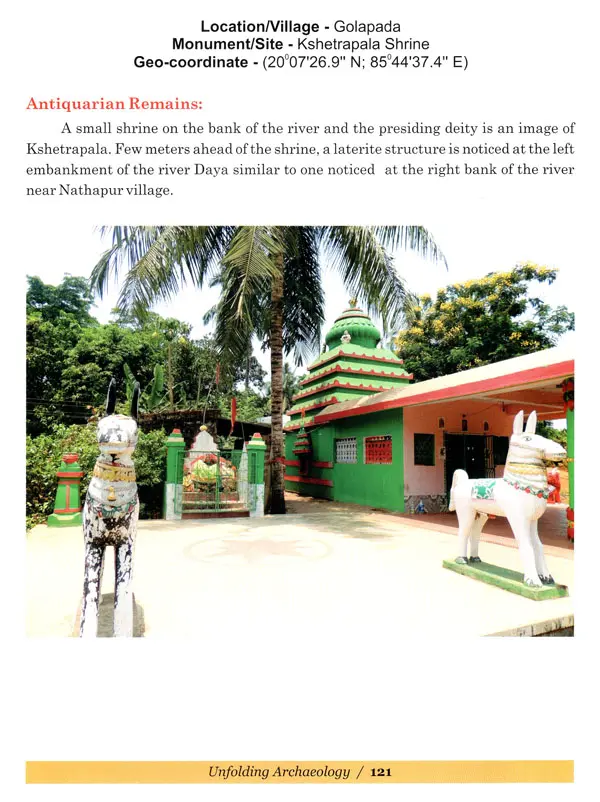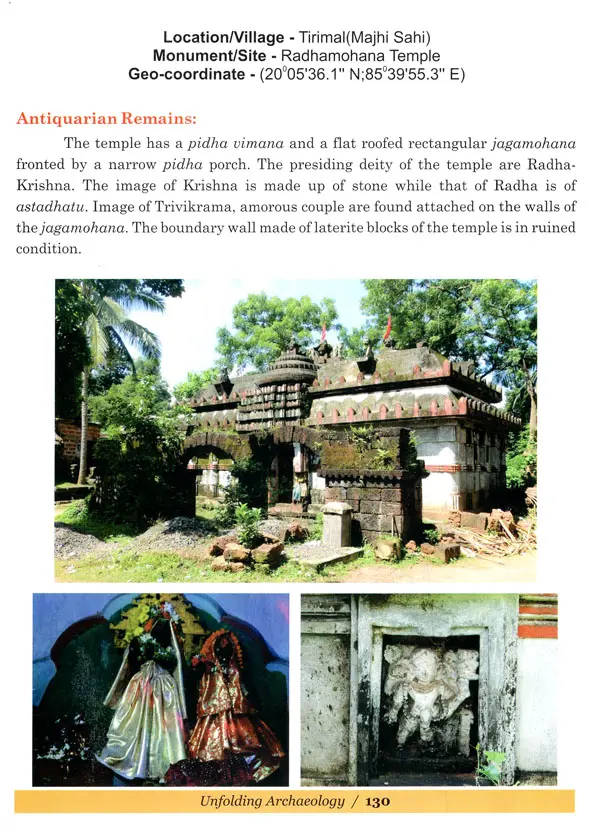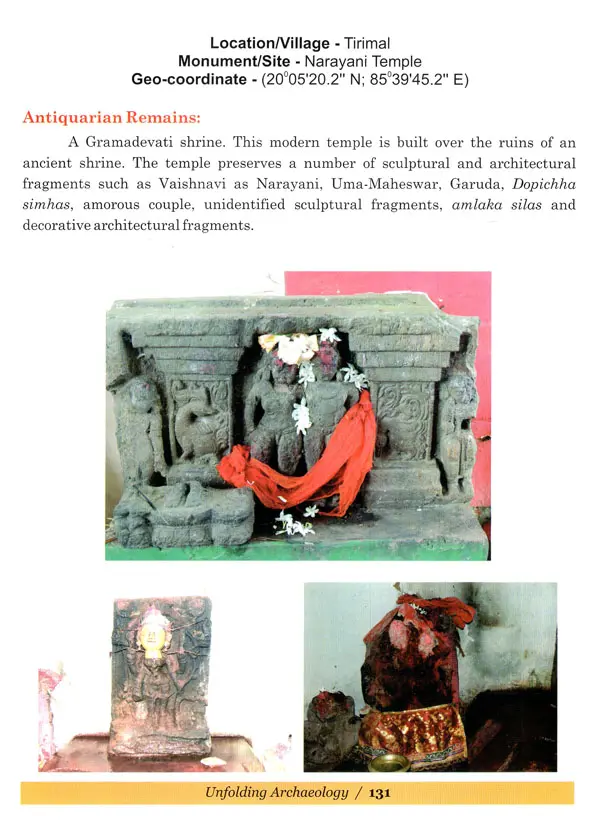
Unfolding Archaeology (Exploration on the Right Bank of River Daya From its Origin to Tirimal in District Khurda, Odisha)
Book Specification
| Item Code: | UAP878 |
| Author: | DILLIP KUMAR KHAMARI |
| Publisher: | Aayu Publications, New Delhi |
| Language: | English |
| Edition: | 2017 |
| ISBN: | 9789385161636 |
| Pages: | 134 (Throughout Color Illustrations) |
| Cover: | HARDCOVER |
| Other Details | 10.00 X 7.50 inch |
| Weight | 490 gm |
Book Description
The exploration carried out on the right bank of river Daya in Distt. Khurda Odisha covering 112 locations has unfolded new facets of archaeology in the region. The habitations on the river valley particularly in the coastal area during the Neolithic chalcolithic time have thrown fresh lights on the settlement pattern. The outcome of the exploration supported by photographs of antiquarian remains has been given in this book with the objective to provide mostly first hand information to students and research scholars so that the very objective of the effort is achieved and further researches are carried out. Selecting the banks of river Daya for the exploration is perhaps a thoughtful move by the author because the history of Odisha would perhaps remain incomplete without referring to river Daya.
Dr. Dillip Kumar Khamari obtained his first class Master Degree in Ancient Indian History from Sambalpur University, Odisha in 1992. He did his P.G. Diploma in Archaeology from the Institute of Archaeology, New Delhi in 1995 and joined in the Archaeological Survey of India as Assistant Archaeologist in 1997. He was awarded Ph.D in Ancient History and Archaeology on the topic "Archaeology of Sanchi in the light of recent discoveries from Madhya Pradesh Bhoj Open University in 2008. In 2012 he was directly selected as Superintending Archaeologist in the Archaeological Survey of India by the Union Public Service Commission. Presently he is serving as the Superintending Archaeologist of Raipur Circle, Raipur and holding the additional charges of Nagpur Circle, Nagpur and Excavation Branch-1, Nagpur.
He has participated in various excavations, explorations and setting up of archaeological museums of which mentions may be made to excavations at Dholavira, Lalkot, Golbai Sasan, Barabati, Sanchi, Udaigiri, Kulhadia, Hampi, Sirpur etc. As the Superintending Archaeologist of Excavation Branch-IV, Bhubaneswar he conducted exploration on the right bank of River Daya. The credit of discovering the well known Neolithic-Chalcolithic site at Suabarel, Odisha goes to him. After discovering the site in 2013 section scraping at the site was carried out by him and opined that the site would add a new dimension on the Neolithic Chalcolithic cultures particularly in coastal Odisha. He was true in his theory. Suabarei is the first such site in Odisha where a clear cut separate deposit of Neolithic and Chalcolithic period could be traced during regular excavations by the ASI. His recent conservation works in Chhattisgarh at Surang Tila, Sirpur, Ganesh Statues, Barsur, Chandraditya Temple.. Barsur; Ratanpur Fort, Ratanpur and Group of temples, Tuman has added a new dimension to his academic career.
It is indeed my pleasure to write the foreword of the present research work brought out by Dr. Dillip Kumar Khamari, enlisting the details of the exploration carried out by him, covering 122 villages/sites located on the right bank of river Daya, District Khurda, Odissa. The exploration has revealed antiquarian remains ranging from Neolithic-Chalcolithic to medieval period. I am confident that the outcome of this exploration being a first-hand information would definitely help both students and scholars in the field of archaeology for all their future researches.
I would specially congratulate Dr. Khamari for selecting the Daya river Valley for his research project because the history of Odisha would remain incomplete without considering the archaeology of river Daya: The outcome of the fierce Kalinga war, fought between Mauryan emperor Asoka and the Kalingan army on the bank of river Daya in Circa 261 BCE completely transformed the life of Emperor Asoka from Chandasoka to Dharmasoka and I believe that this event was a turning point in the history of Odissa that revolutionized the spread of Buddhism into this area..
"The exploration on the right bank of river Daya from its origin to Tirimal" in district Khurda. Odisha was conducted during the field season 2013-14 by the author while posting in the Excavation Branch-IV, Bhubaneswar, as per the exploration proposal approved by the Director General, Archaeological Survey of India, Janpath. New Delhi. In this publication due care have been taken to document all explored sites as well as the findings noticed during the exploration.
River Daya, a distributary of river Kuakhai studded with numerous archaeological sites and remains on its serene bank, origins at Saradeipur (near Badahati) near Bhubaneswar, the capital town of Odisha. It is joined by the Malaguni river below Golbai Sasan, a well known Chalcolithic site and flows through Khurda: and Puri districts before draining into the north-eastern corner of Chilika lake. almost 37 kilometers (23 miles) from its origin.
Archaeological treasures found on the bank of river Daya has been a focal point of research among scholars since the British rule in India. Amongst the sites. the special rock edict of emperor Asoka, located at Dhauli along with the sculptural depiction of the forepart of an elephant perhaps symbolizing to the beginning of large scale use of stone as the medium to experiment during early historic period for the manifestation of Indian Art is noteworthy to mention.
There is a belief that the stream of river Daya turned into red by the blood of slained Odishan soldiers who sacrificed their live in honour to save the pride of their mother land during the Kalinga war fought between the mighty Mauryan and Kalingan army in c. 261 B.C. The horror of the battle and the battlefield has been narrated by the emperor himself in the Shahbazgarhi Rock Edict found in Pakistan.
Book's Contents and Sample Pages
